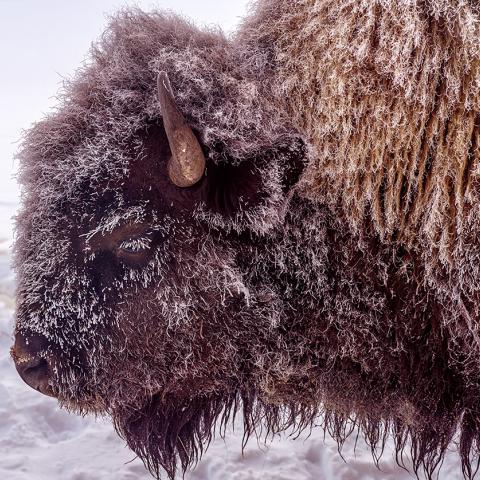A Frosty-Faced Bison, Yellowstone National Park

According to the National Park Service, there are about 5,450 bison as of 2021, which includes two primary breeding herds (Northern and Central). You can see them year-round in both the Hayden and Lamar valleys. In the winter, they may be seen near thermal features around the park, including Upper Geyser Basin, Biscuit Basin, and Mammoth, as well as along the Firehole River, Madison River, Blacktail Deer Plateau, Tower, and the Gardiner Basin. The average male weighs 2,000 pounds and the female weighs 1,000 pounds.
- By Rebecca Latson - March 21st, 2022 4:00am














